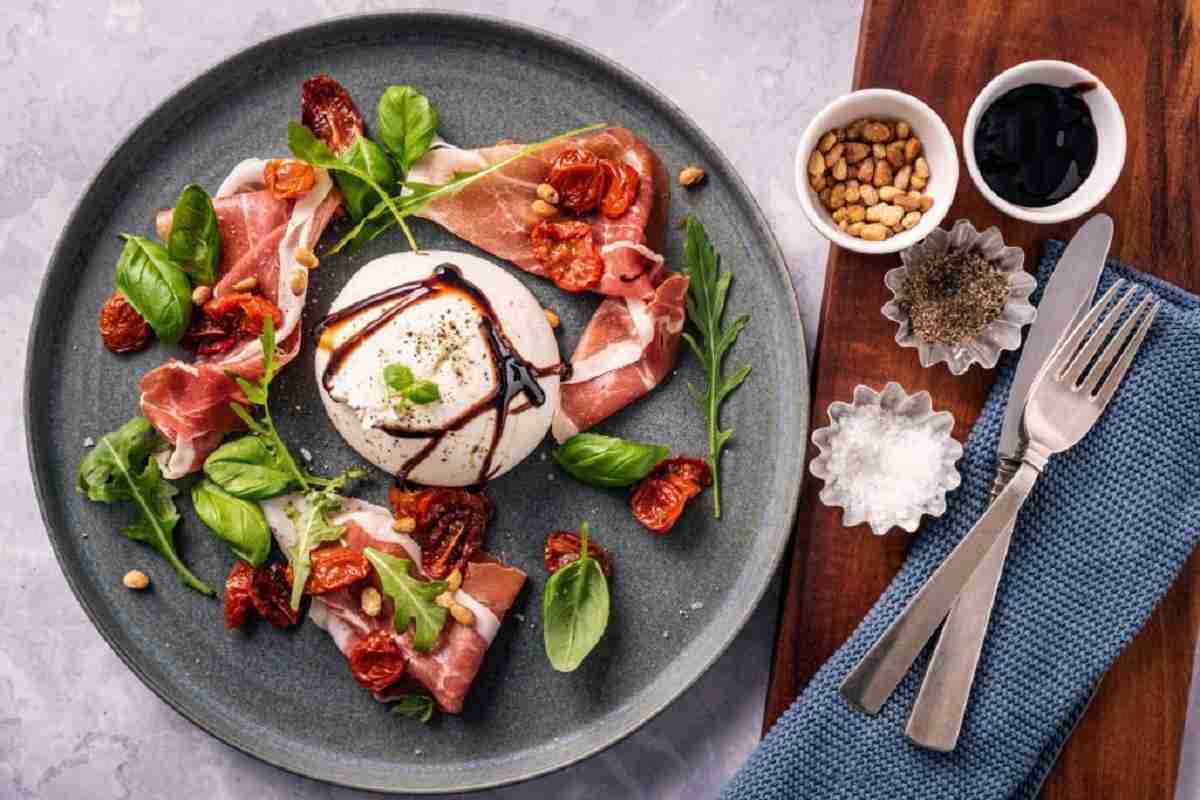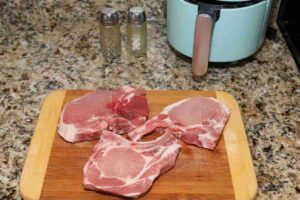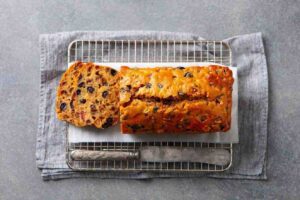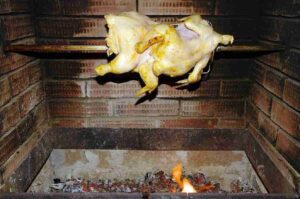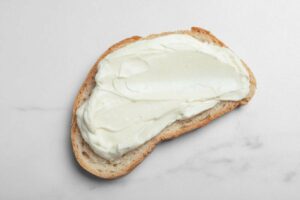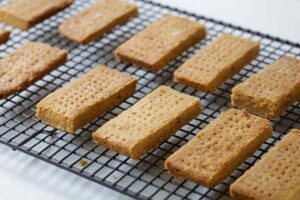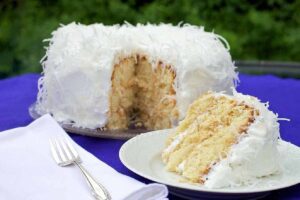Burrata, an indulgent Italian cheese hailing from the Apulia region in southern Italy, has gained enormous popularity in recent years. Renowned for its soft texture and delicate, creamy flavor profile – often described as a “cheese within a cheese” due to its unique structure – recipes have quickly become one of Italy’s favorite fresh cheeses.
Burratta cheese lives up to its Italian name of buttery. Crafted using cow’s milk and composed of a mozzarella shell encasing a soft center filled with stracciatella cheese and cream, its outer mozzarella layer provides a slightly chewy texture while its velvety interior oozes out an irresistibly velvety, buttery consistency.
Burratta cheesemakers use expert techniques to form fresh mozzarella into a pouch-like form and fill it with shredded mozzarella mixed with cream to produce delicate strands suspended in a sweet, rich cream that forms its center. Once sealed, this pouch ensures its creamy center remains intact.
Burrata cheese offers a deliciously luxurious, creamy center when cut open, making it the ideal pairing with various accompaniments. Due to its mild flavor, recipes have long been beloved among chefs and cheese enthusiasts alike; often served drizzled with quality olive oil and dusted with freshly ground black pepper before pairing it with juicy tomatoes, basil leaves, and crusty bread for classic Caprese salad.
Recipes have become so beloved, it has moved beyond their Italian origins to grace menus and recipes worldwide. Its luxurious texture and delicate flavor make it the perfect complement to salads, pizzas, and pasta dishes.

Table of contents
The Origin Story Of Burrata
The history of burrata begins in the early 20th century in the southern Italian region of Apulia (Puglia). To use up leftover mozzarella fragments, the cheese was made.
According to legend, a cheese maker in the Italian city of Andria came up with the idea to fill the leftover mozzarella with cream and produce a new and distinctive cheese. In order to eliminate waste and utilize every step of the cheese-making process, this innovation was developed.
The Italian word “burro,” which means butter, is where the name “burrata” originates. This term alludes to the cheese’s filling’s buttery and creamy texture.
In the beginning, burrata was only produced in the Apulia region for local use. Since fresh cheese production peaked in the spring and summer, that is when it was customarily eaten. The cheese was praised for having a subtle, opulent flavor.
Over time, burrata gained appeal both domestically and abroad, as well as recognition outside of its native region. It is now widely manufactured and consumed throughout the world.
Both chefs and food aficionados adore burrata because of its distinctive blend of flavors and textures. Its fascinating backstory adds to its allure and has helped to establish its standing as a gourmet cheese with a lengthy past.
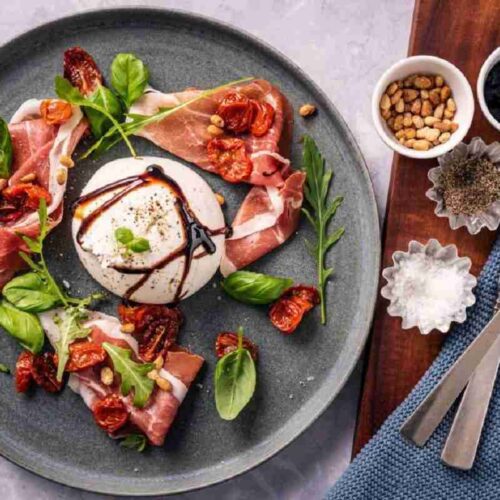
Burrata Bliss: A Heavenly Cheese Delight
Equipment
- 1 Stainless Steel Pot A large stainless steel pot is necessary for heating and maintaining the temperature of the milk during the cheese-making process. It should be big enough to hold the desired amount of milk and allow room for stirring.
- 1 Thermometer A food-grade thermometer is essential for monitoring the milk's temperature accurately. It helps ensure that the milk reaches the correct temperature for curdling and prevents overheating or scorching.
- 1 Cheese Cloth Cheese cloth, a finely woven fabric, is used for straining and shaping the cheese. It allows the whey to drain out while retaining the curds. Choose a high-quality cheese cloth that is tightly woven and can withstand the weight of the curds without tearing.
- 1 Slotted spoon A slotted spoon or ladle with small holes or slots is necessary for gently scooping and transferring the curds. This utensil helps separate the curds from the whey during the cheese-making process.
- 1 Cheese Molds Cheese molds are used to shape the burrata. These molds come in various sizes and shapes, but for burrata, a spherical or pouch-like mold is commonly used.
- 1 Stracciatella Tool A stracciatella tool is a specialized utensil designed to shred the mozzarella and create the creamy stracciatella filling. It typically consists of thin wires or blades that easily break down the mozzarella into delicate strands.
- 1 Cheese Aging Container If you prefer to age your burrata, you will need a cheese aging container or cheese cave. This container provides a controlled environment for the cheese to develop its flavors and textures over time.
- 1 Refrigerator After making the burrata, a refrigerator is needed for storing and chilling the cheese. This allows the cheese to set and solidify, enhancing its texture and flavor.
Ingredients
- 1 Pound butternut squash peeled, seeded then cut in 1-inch piece
- 1 peice sage sprig
- 3 tbsp unsalted butter
- 2 tbsp Kosher salt or as needed
- 2 tbsp Freshly ground pepper
- 6 cups chicken stock or low-sodium broth
- 1/4 cups extra-virgin olive oil, plus more for drizzling
- 2 small onions
- 6 cups Venere black rice
- 1/4 cup dry wine
- 2 tbsp freshly grated Parmigiano-Reggiano cheese, plus more for serving
- Flaky sea salt
Instructions
- Turn the oven on to 350°. Mix the squash, mint sprig, 2 tablespoons of butter, and 1/4 cup of water in a 9-by-13-inch baking dish. Season with kosher salt and pepper. Roast the squash for about 25 minutes, or until it is soft and most of the juice is used up. Throw away the sage.
- Put the squash in a food processor and let it cool down a bit. Blend until smooth, then add kosher salt and pepper to taste. Put the squash puree in a medium pot and heat it very slowly to keep it warm.
- In the meantime, bring the stock to a low boil in a medium pot. Use very low heat to keep warm.
- Spoon the squash puree into shallow bowls, then spoon the rice on top and sprinkle with the burrata. Add some flaky sea salt and a splash of olive oil, and it's ready to serve. Bring more cheese to the table.
Video
Notes
- Burrata cheese is an Italian fresh cheese made of mozzarella and cream. Distinguished by a soft center encased by firm outer layers, burrata boasts an irresistibly indulgent flavor.
- When looking for recipes, look for packages that feel heavy and firm, without signs of discoloration or mold growth.
- Burrata should be eaten shortly after purchase to maximize its freshness, so try and enjoy it within one or two days of your purchase. Avoid freezing burrata as this may alter its texture and ruin its taste.
- Before serving burrata, allow it to come back up to room temperature for approximately 15-20 minutes before refrigerating it again. This will enhance its creaminess and flavor.
- To cut burrata, take care to use a sharp knife and carefully slice through its outer layer. As soon as the creamy center emerges, scoop or spread it on your dish for serving.
- Burrata pairs perfectly with many ingredients and dishes. It makes an exquisite cheese course when served alone with olive oil, sea salt, and cracked black pepper; but also pairs beautifully with salads, pasta dishes, pizzas, and bruschetta dishes.
- Create an easy and delicious salad by combining slices of ripe tomatoes, fresh basil leaves, and burrata cheese into one serving dish. Finish it off with extra-virgin olive oil, and balsamic glaze, and sprinkle some salt and pepper for garnishing.
- Burrata can add the perfect finishing touch to spaghetti or penne pasta dishes; simply fold chunks in at the end of cooking using olive oil, and grated Parmesan cheese, and the heat from your pasta will gently melt away any cheese that remains, producing a delectable sauce!
- Burrata cheese makes an excellent pizza topping. Begin by spreading a thin layer of tomato sauce onto your pizza dough, before topping with slices of burrata cheese and any additional desired ingredients (fresh basil leaves are great!). Bake the pizza until its crust has become golden-brown in color and its cheese has fully melted and bubbled up.
- If you have leftover burrata recipe store it in its original packaging or tightly covered in plastic wrap in the refrigerator, for optimal taste and texture. Be sure to consume it within 24 hours for optimal results.
- Experience the creamy, luxurious texture and flavor of burrata as an exciting ingredient in your favorite recipes or as an enjoyable standalone delight!
5 Delicious Ways to Enjoy Burrata Cheese
Burrata and creamy Italian cheese noted for its delectable flavor and luxurious texture is burrata. It can be consumed in many different ways, both on its own and when combined with other delectable foods. Here are five delectable ways to enjoy it cheese’s exquisite flavors:
1. Caprese Salad
By combining cheese, thinly sliced ripe tomatoes, and fresh basil leaves, you may make the traditional Caprese salad. For an additional flavor boost, drizzle with extra virgin olive oil, season with salt and pepper, then top with a glaze or reduction of balsamic vinegar. The flavorful basil and juicy tomatoes go incredibly well with the creamy burrata.
2. Bruschetta
Spread plenty of burrata cheese on top of toasted slices of baguette or crusty bread. For a sweet and savory touch, add various toppings like prosciutto, fresh rocket, roasted cherry tomatoes, or a drizzle of honey. A lovely contrast of textures is created by the softness of the cheese and the crunch of the bread.
3. Pasta Dish
By including burrata cheese, you may give your pasta meals a posh touch. Toss cooked pasta with a flavorful sauce consisting of fresh basil, cherry tomatoes, garlic, and extra virgin olive oil. Sprinkle shredded burrata cheese on top of the spaghetti and toss gently to let the cheese begin to melt. The meal is made richer and more complex by the creamy burrata.
4. Grilled Vegetables
Vegetables that have been grilled can be elevated by pairing them with burrata cheese. Grill a variety of veggies, including asparagus, bell peppers, zucchini, and eggplant. Put them on a dish and sprinkle with burrata cheese that has been split into bits. For a colorful and filling dish, add a drizzle of balsamic glaze or a scattering of fresh herbs.
5. Flatbread Pizza
Put burrata cheese on your homemade flatbread pizzas for a creamy, decadent topping. Add your preferred toppings, such as caramelized onions, roasted garlic, mushrooms, and fresh basil, after spreading tomato sauce or pesto on the flatbread. Burrata cheese should be torn into small pieces and distributed equally over the toppings. For a luxurious pizza experience, bake the pie until the cheese is melted and bubbling.

Pairing Burrata with Complementary Ingredients
With so many different things that go well with burrata’s mild, creamy flavor, you can get creative in the kitchen. Here are some savory foods to serve with burrata:
Sweet and Juicy: Slices of ripe peaches, nectarines, or strawberries make a delicious contrast to burrata’s sweet and juicy flavor. For an additional touch of freshness, drizzle with honey and sprinkle with mint leaves that have been chopped.
Sweet and Salty: With the salty undertones of prosciutto or Parma ham, counterbalance the smoothness of the burrata. You can surround burrata with tiny slices of these cured meats to create a mouthwatering flavor combination.
Roasted Vegetables: Vegetables that have been roasted, such as asparagus, bell peppers, or cherry tomatoes, have stronger flavors. Combine these roasted treats with burrata to make a dinner that highlights the best of seasonal ingredients.Burrata is the height of creamy indulgence when paired with Roasted Aubergine.
Burrata Variations: Exploring Different Flavors
While the classic is a hit, cheesemakers have also experimented with different flavor infusions to provide interesting substitutes. Here are some fascinating it varieties to try:
Truffle Burrata: This variant gives your cheese board or pasta meals a touch of luxury while infusing them with the earthy aroma of truffles.
Pesto Burrata: This dish adds a blast of Mediterranean goodness to your plate by combining the flavors of fresh basil, pine nuts, and Parmesan.
Burrata with Sun-Dried Tomatoes: This version is a culinary match made in heaven because it combines the sweetness of sun-dried tomatoes with their creamy smoothness of it.
The Health Benefits of Burrata
Even while it is undoubtedly scrumptious, it has some health advantages when consumed in moderation. You don’t have to feel bad about eating it for the following reasons:
Calcium Boost: It is a fantastic source of calcium, supporting healthy bones and teeth.
Protein Powerhouse: This cheese has a lot of protein, which helps with muscle building and repair.
Vitamin-Rich: It includes important vitamins, including vitamins A, D, and E, which promote a number of biological processes.
